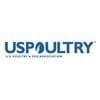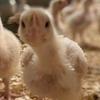Explore all the information on
Poultry welfare
Proper animal welfare involves providing the proper housing, management, nutrition, disease prevention and treatment, responsible care, humane handling and, when necessary, humane euthanasia. These factors allow for the most optimal and humane growing environment. The concept of animal welfare includes three elements: the bird’s normal biological functioning, its emotional state and its ability to express its natural behaviors. Improving animal welfare can be accomplished through offerings like poultry feed enrichment, which can reduce stress, thereby increasing performance, productivity and profitability. Animal welfare is currently a major requirement for intensive poultry production. Beak trimming, stocking density, free access to feed, heat stress, and air pollutants became important issues, which are regulated in several countries. Animal welfare is observed by watching how birds naturally behave and even by looking at mortality stemming from aggressive behaviors.
I. INTRODUCTION Brooding chicks with maternal care can improve the welfare of chicks; specifically, by improving prosocial behavior and reducing feather pecking (Edgar et al., 2016). Yet providing chicks mother hens in industry is impractical and a biosecurity risk. Artificial components of maternal care may provide some benefits to chicks and improve welfare. Indeed, there is some evidence that lighting that mimics the maternal environment, synthetic maternal olfactory cues and...
Comments : 0
Recommendations: 0
by Lyndsey Johnston
A group of researchers from the Georgia Tech Research Institute, University of Saskatchewan, University of Georgia, Auburn University, USDA-ARS U.S National Poultry Research Center, and Tyson Foods studied the concept of an alternative slaughtering procedure on farm and its effects on carcass quality, carcass microbiology, and meat quality. The team hypothesized that the on-farm slaughter and transport system, or FSaT, may improve welfare and...
Comments : 0
Recommendations: 0
Frequent visits to an outdoor range has been associated with good meat chicken welfare but not all chickens will access the outdoor range when provided with the opportunity (Taylor et al., 2018). On average, it takes an average of three to four days for most meat chickens in commercial conditions to access the range after the pop-holes first open (Taylor et al., 2017a). Yet chickens that access the range soon after the pop-holes first open, range more frequently throughout their lives...
Comments : 0
Recommendations: 0
You are frying eggs for breakfast. You get distracted and the next thing you know your eggs are burning and your kitchen is filling with smoke. What do you do first? Open the window to get rid of the smoke or remove the skillet from the stove to stop the generation of the smoke? You of course, remove the skillet from the stove, then open windows because opening the windows in itself doesn't solve the problem, because your eggs are still burning and filling the kitchen with...
Comments : 0
Recommendations: 2
Introduction Coccidiosis is a parasitic infection caused by Eimeria spp and persistently affecting broiler chicken, causing high morbidity, impaired growth, and mortality [1]. Unlike many other protozoan parasites, Eimeria spp exclusively invades the intestinal epithelium showing high tissue specificity [2]. Eimeria (E.) maxima is characterized by producing the largest oocysts and male gamonts among the other species infecting chicken [3]. E. maxima particularly infects chickens at...
Comments : 0
Recommendations: 1
Aidan Connolly (AgriTech Capital President) comments on how much and how fast can the poultry industry grow by embracing new technologies, in this Engormix interview....
Comments : 1
Recommendations: 0
Gonzalo Moreno (FENAVI Executive President) comments on the relevance of a sustainability program as a managerial tool, and how to better communicate its impact, in this Engormix interview....
Comments : 0
Recommendations: 0
Nath Morris (USPOULTRY President) talks about strategies against Avian Influenza and other challenges in the industry, as well as a new USPOULTRY podcast and expectations for the upcoming IPPE 2025, in this Engormix interview....
Comments : 0
Recommendations: 0
Paul Bredwell (Vice President of Environmental Programs at USPOULTRY) comments on the framework progress, great reception in the industry, and how to involve more people from the value chain, in this Engormix interview....
Comments : 0
Recommendations: 0
Introduction Broiler chickens require favourable rearing conditions to maximise their genetic potential for growth. Significant deviations from optimum rearing conditions can compromise feed utilization, growth performance, and bird welfare [1]. Stocking density is one critical rearing factor that has serious implications on the economic and social sustainability of the poultry industry. Globally, the accepted industry standard is to achieve between 30 and 38 kg bodyweight per...
Comments : 0
Recommendations: 0
In many regions, animal production under hot conditions is a major challenge and is expected to become more common in the future. During heat stress, several strategies are used to dissipate excess heat. When high temperatures, water consumption increases, and feed intake decreases (thus reducing nutrient absorption).In order to dissipate heat, livestock will increase the heart and breathing rate. Metabolism is severely affected and usually leads to oxidative stress. Poultry is a...
Comments : 5
Recommendations: 2
Introduction Locomotory activity is strongly associated with broiler chicken welfare; many behavioral patterns that depend on locomotion, such as exploration, seeking food, water, shelter, and escaping predators, are negatively affected by the poor walking ability in fast-growing broiler chickens [1]. Rapid muscle growth and exacerbated development of the Pectoralis major muscle in fast-growing broiler chickens change the chickens’ center of gravity, altering the...
Comments : 0
Recommendations: 1


APIs and Vitamin MARKET - The weak demand for the APIs
Suggested link
Introduction Heat stress (HS) is one of the most challenging environmental stressors despite the modern climate control equipment in broiler chickens’ houses. Broiler flocks may be seasonally exposed to HS that varies in intensity according to the relative humidity of the region [1]. Multiple studies have identified the various adverse effects of acute or chronic HS on chickens, such as a severe reduction in feed intake and growth [2–4], systemic alkalosis [5],...
Comments : 0
Recommendations: 1
Dr. Leonie Jacobs (Virginia Tech / Poultry Extension Collaborative) offers insights on poultry welfare and its potential for the future of production systems -and the industry as a whole-, during this Engormix interview....
Comments : 1
Recommendations: 1


Innovative Directions in Aflatoxin Testing Point to Measureable Gains in Quality Of Lab Data
Suggested link
Dr. Leonie Jacobs (Virginia Tech / Poultry Extension Collaborative) explains how poultry welfare has gained relevance and created awareness in the industry, and comments on some interesting projects, during this Engormix interview....
Comments : 1
Recommendations: 0
Dr. Leonie Jacobs (Virginia Tech / Poultry Extension Collaborative) talks about PEC goals, publications, and initiatives (including courses and an upcoming symposium) during this Engormix interview....
Comments : 1
Recommendations: 1
High stocking density and environmental factors such as acute heat stress, health challenges, bacterial or viral exposure, and mycotoxin-contaminated diets may cause serious stress of laying in modern intensive egg production systems. Laying hens under immunological stress are susceptible to pathogen infection due to an imbalance in immune response and cecal microbiota. Laying hens that are raised under the conditions of intensive farming and high stocking densities are exposed to...
Comments : 1
Recommendations: 1
The holiday season is once again here, which means many kitchens will be filling up with baked goods and savory dishes. It is also the time of year when the use of eggs increases for all of those delicious dishes! However, eggs can be a potential source of Salmonella bacteria that can cause illness or in rare cases even death. Here are some tips to...
Comments : 0
Recommendations: 0
The hatching phase of broiler production refers to the last three days of incubation, which are embryonic days 18-21. This phase of embryonic development is critical for the chick’s survival, as well as welfare and production later in life. In commercial hatcheries, eggs with viable embryos are transferred from incubators to...
Comments : 0
Recommendations: 0
Light and dark cycles within a 24-hour period play a crucial role in maintaining physiological and behavioral rhythms in animals. In birds, daily rhythms associated with feed intake, physical activity, sleep-wake cycles, and physiological rhythms are influenced by photoperiod. The ancestors of domestic chickens, the Red...
Comments : 0
Recommendations: 0




.jpg&w=3840&q=75)

























